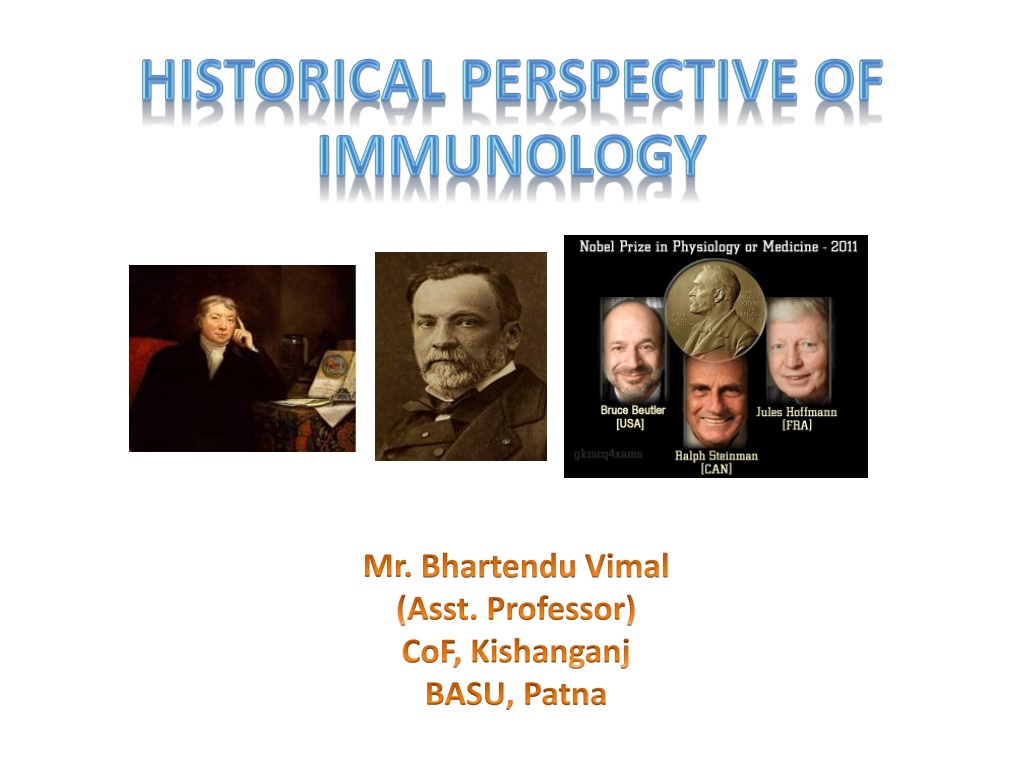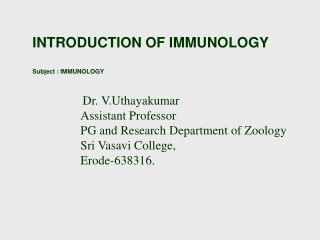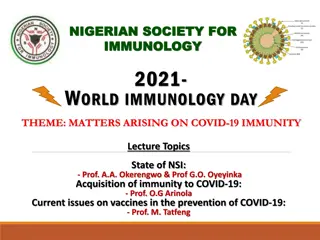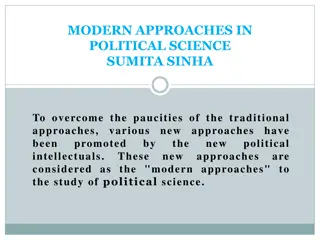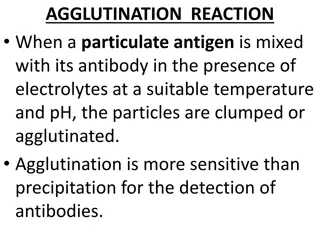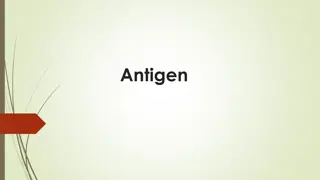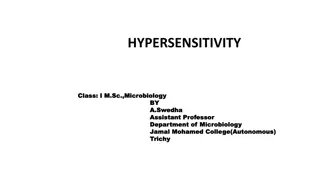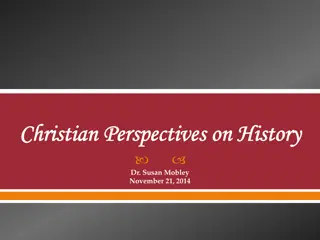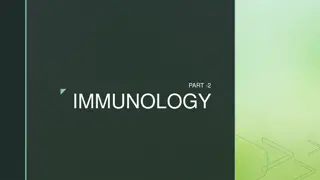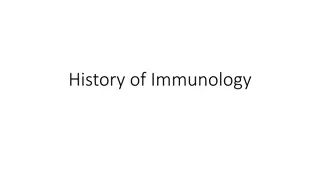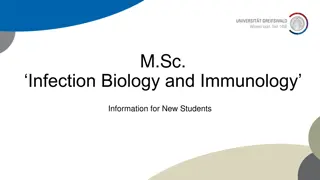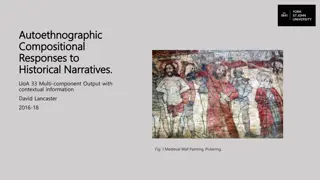Overview of Immunology: From Historical Perspectives to Modern Techniques
Immunology is the study of the immune system, its functions, and responses to various stimuli. The field traces back to ancient times, with historical figures like Thucydides and Edward Jenner contributing to its development. From innate immunity to adaptive responses, the immune system plays a crucial role in fighting infections, allergies, and autoimmunity. Understanding the evolution of immunology helps in appreciating modern techniques used to induce immunity, like vaccination.
Download Presentation

Please find below an Image/Link to download the presentation.
The content on the website is provided AS IS for your information and personal use only. It may not be sold, licensed, or shared on other websites without obtaining consent from the author. Download presentation by click this link. If you encounter any issues during the download, it is possible that the publisher has removed the file from their server.
E N D
Presentation Transcript
Mr. Bhartendu Vimal (Asst. Professor) CoF, Kishanganj BASU, Patna
Introduction Immunology and Immune system To rid the body of foreign particles (microbial and otherwise) and abnormal cells Immunis, meaning exempt Two main function is- Recognition Response
Overview of immunology Innate Immunity: Adaptive Immunity: Specificity Distinguish antigens sometimes present from those always present Memory and Recall Cells of the immune system Leukocytes originating from haemopoietic cells Communication with other systems Endocrine system Central nervous system Skeletal system Disruption of the Immune System Allergy Autoimmunity Immunodeficiency Fast-acting Less specific recognition Early during evolution e.g. barriers to infection such as skin and mucus surfaces
Historical perspective Earliest written reference to the phenomenon of immunity can be traced back to Thucydides, the great historian of the Peloponnesian War. The case was Plague in Athens, in 430 BC The first recorded attempts to induce immunity deliberately were performed by the Chinese and Turks in the 15th century. Various reports suggested that the dried crusts derived from smallpox pustules were either inhaled into the nostrils or inserted in to the small cuts in the skin A technique called variolation In 1718, Lady Mary Wortley Montagu, the wife of the British ambassador to Constantinople, observed the positive effects of variolationon the native population and had the technique performed on her own children.
The method was significantly improved by the English physician Edward Jenner, in 1798. Intrigued by the fact that milkmaids who had contracted the mild disease cowpox were subsequently immune to smallpox, which is a disfiguring and often fatal disease, Jenner reasoned that introducing fluid from cowpox pustule into people (i.e., inoculating them) might protect them from smallpox. To test this idea, he inoculated an eight-year-old boy with fluid from a cowpox pustule and later intentionally infected the child with smallpox. As predicted, the child did not develop smallpox.
The induction of immunity to cholera: Louis Pasteur had succeeded in growing the bacterium thought to cause fowl cholera in culture and then had shown that chickens injected with the cultured bacterium developed cholera. After returning from a summer vacation, he injected some chickens with an old culture. The chickens became ill, but, to Pasteur s surprise, they recovered. Pasteur then grew a fresh culture of the bacterium with the intention of injecting it into some fresh chickens. But, as the story goes, his supply of chickens was limited, and therefore he used the previously injected chickens. Again to his surprise, the chickens were completely protected from the disease.
Pasteurhypothesized and proved that aging had weakened the virulence of the pathogen and that such an attenuated strain might be administered to protect against the disease. He called this attenuated strain a vaccine (from the Latin vacca, meaning cow ), in honor of Jenner s work with cowpox inoculation. In 1885, Pasteur administered his first vaccine to a human, a young boy who had been bitten repeatedly by a rabid dog. The boy, Joseph Meister, was inoculated with a series of attenuated rabies virus preparations. He lived and later became a custodian at the Pasteur Institute. From Harper s Weekly 29:836; courtesy of the National Library of Medicine
Relationship between two Great Scientists who contributed significantly to immunology Although Koch and Pasteur were contemporaries, they were intensely competitive and actually bitter enemies--of course, the outbreak of the Franco-Prussian war (1870) did nothing to cement their relationship. In a trenchant example of how not to behave toward a colleague at a scientific meeting, Koch made his way to the podium following Pasteur s lecture and said: When I saw in the program that Monsieur Pasteur was to speak today...I attended the meeting eagerly, hoping to learn something new...I must confess that I have been disappointed, as there is nothing new in the speech which Monsieur Pasteur has just made...
First insights into mechanics of immunity Emil von Behring 1880 s- Metchnikoff discovered phagocytic cells that ingest microbes and particles cells conferred immunity S. Kitasato 1890- von Behring and Kitasato discovered blood sera could transfer immunity liquid of blood conferred immunity Q: Which confers immunity cells or serum? Elie Metchnikoff
A:Both cells and serum contribute to immunity! 1930 s early techniques made it easier to study humoral elements [than cellular ones]. -discovery of active component of blood gamma globulin protein 1950 s discovery of T and B cells Later discoveries linked lymphocytes to both cellular and humoral immunity
Understanding specificity of antibody for antigen took years Karl Landsteiner Early 1900 s- Landsteiner revealed antibody could be produced vs. most any organic compound Last 20 yrs- Antibody specificity reveals unlimited range of reactivity also to newly synthesized chemicals!
Edward Jenner Born on May 17, 1749, in Berkeley, Gloucestershire, England, Died Jan. 26, 1823. As a teenager, while learning to be a physician, he heard a young farm girl tell a doctor that she could not contract smallpox because she had once had cowpox (a very mild disease). This started him thinking about a vaccine. out a famous experiment on a healthy 8-year-old boy, James Phipps, with cowpox. He took material from a burst pustule on the arm of Sarah Nelmes who had apparently contracted cowpox. He then deliberately exposed the boy to virulent variola virus two months later and found that the child was protected, showing only a mild inflammation around the site where the variola was injected. After years of experimenting, on May 14, 1796, Edward Jenner carried vaccination on his own son, then aged one-and-a-half, with the swine pox, followed by conventional smallpox inoculation. Some record shows that in 1789 he had already experimented Sarah Nelmes hand A CRIME??
Louis Pasteur (1822-1895) Stereochemistist: molecular asymmetry Fermentation and silk worker disease Germ Theory of disease Attenuated vaccines for cholera, anthrax, and rabies On July 4, 1886, 9-year-old Joseph Meister was bitten repeatedly by a rabid dog. Pasteur treated him with his attenuated rabies vaccine two days later. Meister survived. Joseph Meister later become a gatekeeper for the Pasteur Institute. In 1940, when he was ordered by the German occupiers to open Pasteur's crypt, Joseph Meister refused and committed suicide!
Emil Adolf von Behring (1854 1917) Awarded first Nobel Prize in physiology, 1901 Student of Koch With Kitasato and Wernike, discovered anti-toxin for Diphtheria and Tetanus and applied as therapy.
Paul Ehrlich (1854 1915) Developed a series of tissue-staining dyes including that for tubercle bacillus. Worked with Koch. Developed anti-toxin (Diphtheria) and hemalysis Side-chain theory of antibody formation: "surface receptors bound by lock & key; Ag stimulated receptors" Shared 1908 Nobel Prize with Metchnikoff.
Elie Metchnikoff (1845-1916) Formed the basis of leukocyte phagocytosis. Birth of cellular immunology Shared Nobel Prize with Ehrlich in 1908
Milstein (b. 1927) and Khler (1946-1995) Monoclonal antibody
Susumu Tonegawa (b. 1939) Cloning of the Immunoglobulin gene 1987 Nobel prize for his discovery of "the genetic principle for generation of antibody diversity".
Peter C. Doherty and Rolf M. Zinkernagel "the specificity of the cell-mediated immune defence". Two signals 1996 Nobel Prize for their discoveries concerning
Stem Cell Lymphoid cell line Myeloid cell line Polymorpho -nuclear leucocytes Monocytes B T NK Macrophages Neutrophils Eosinophils Basophils Specific Innate
